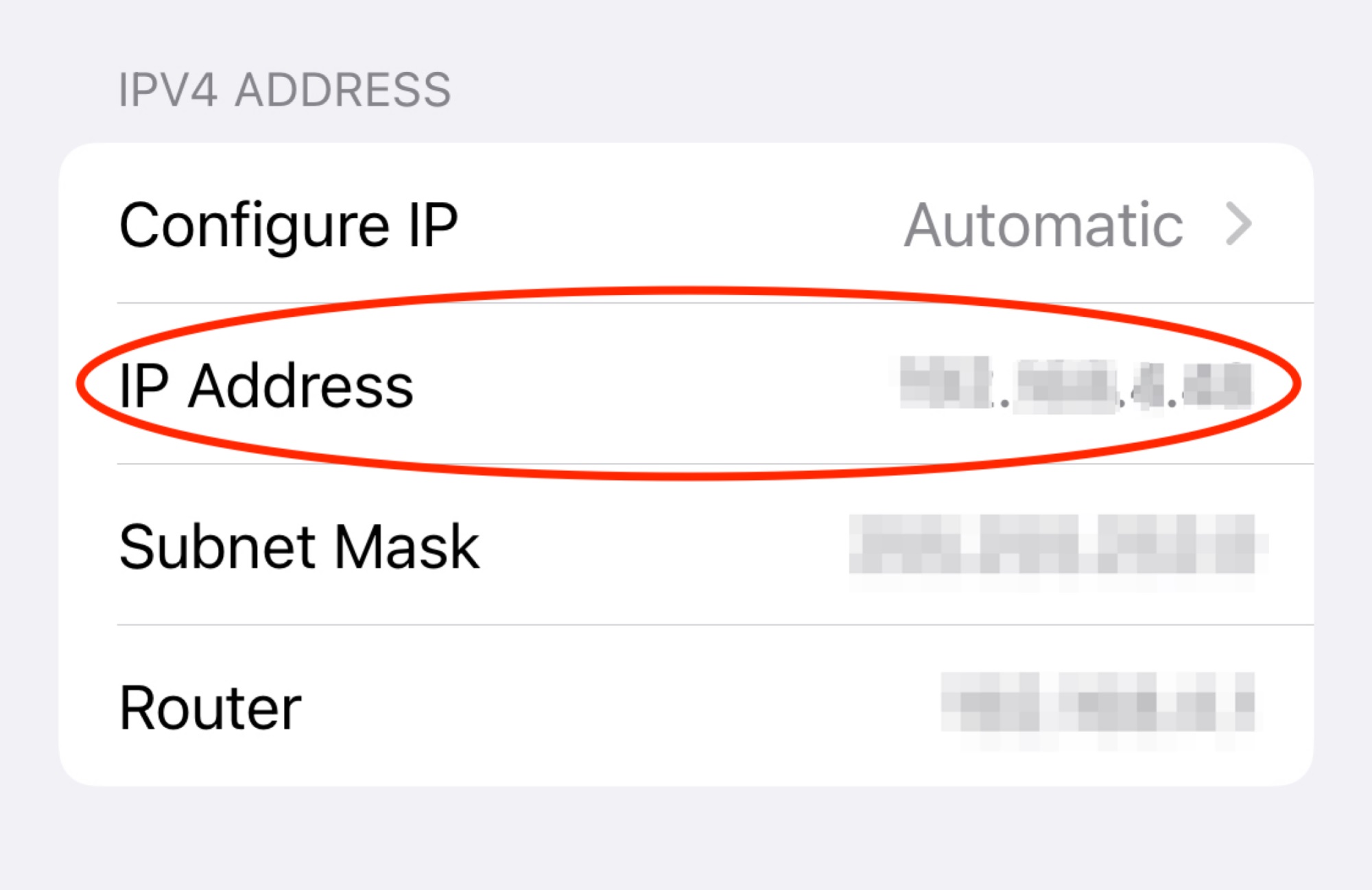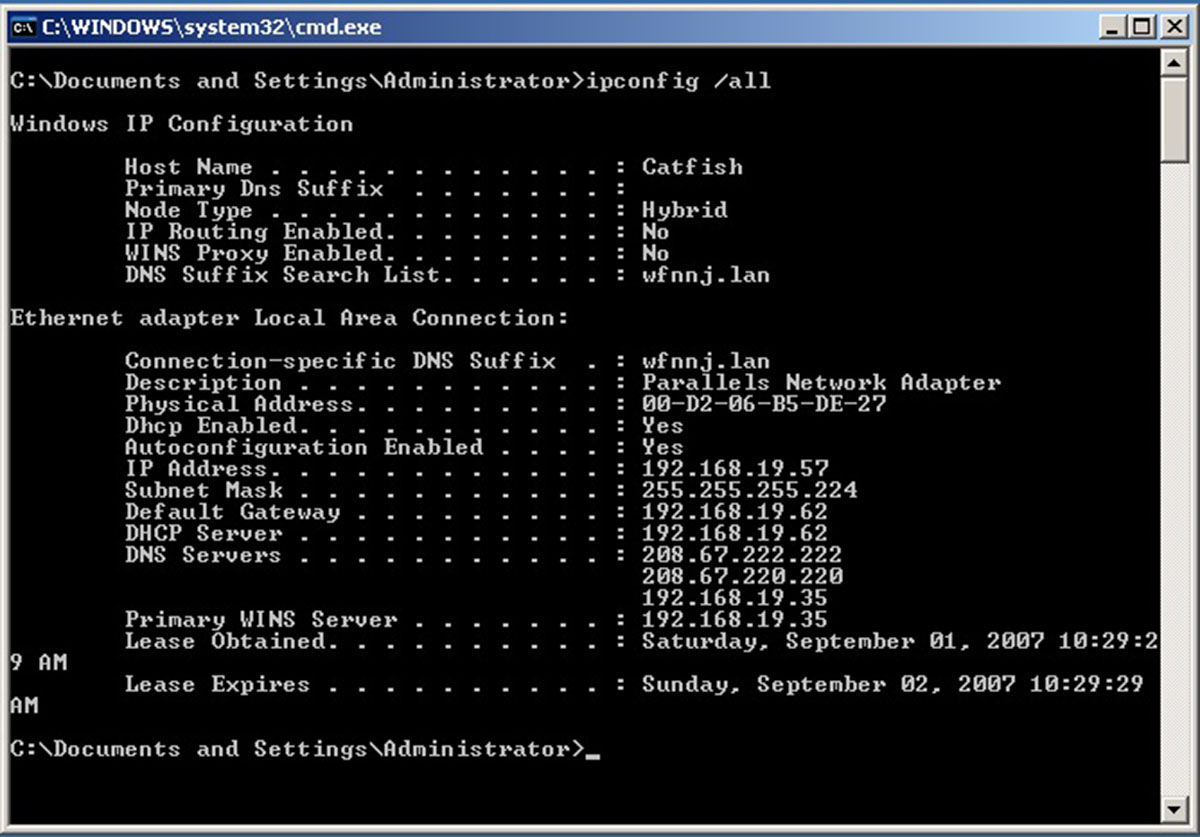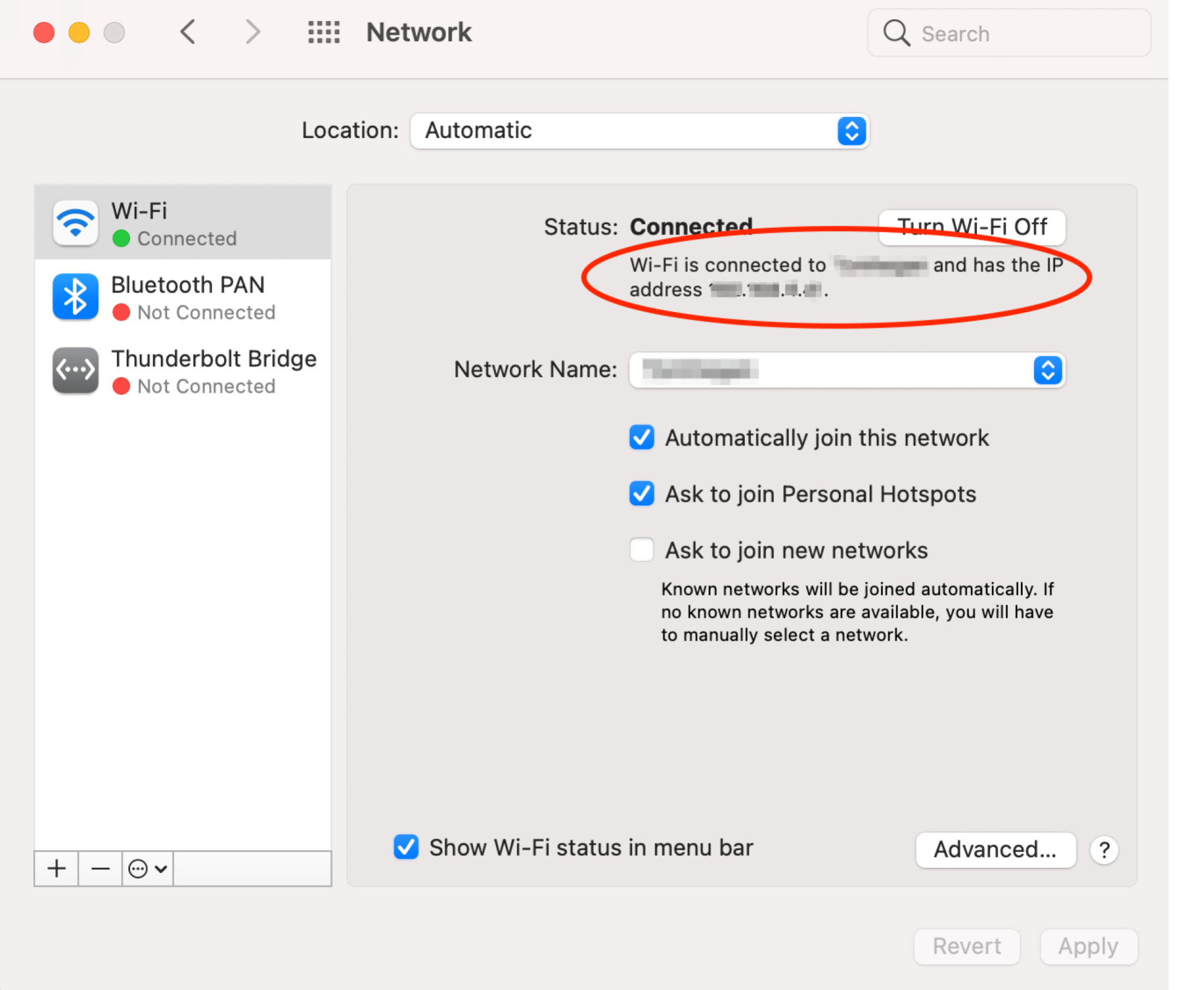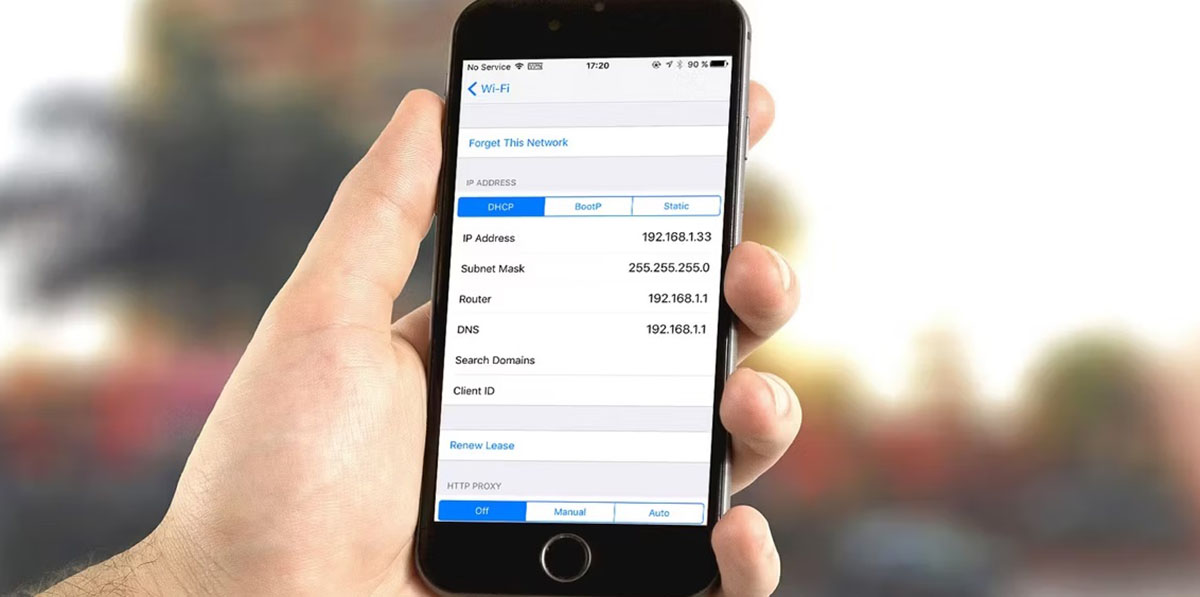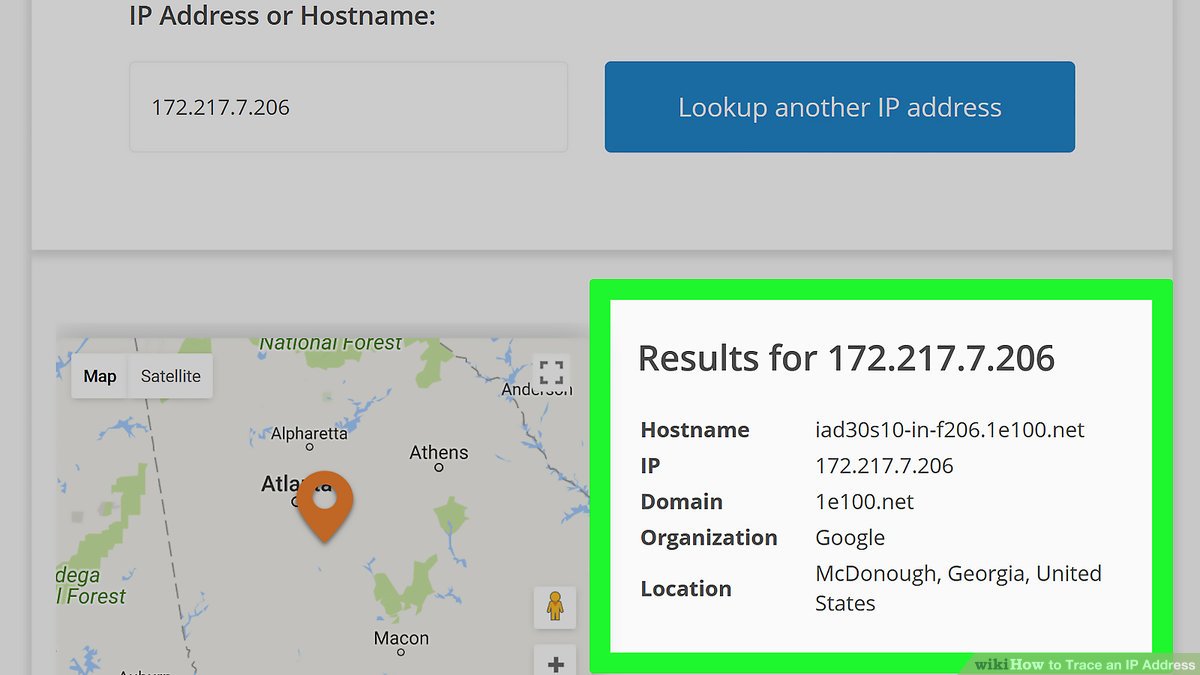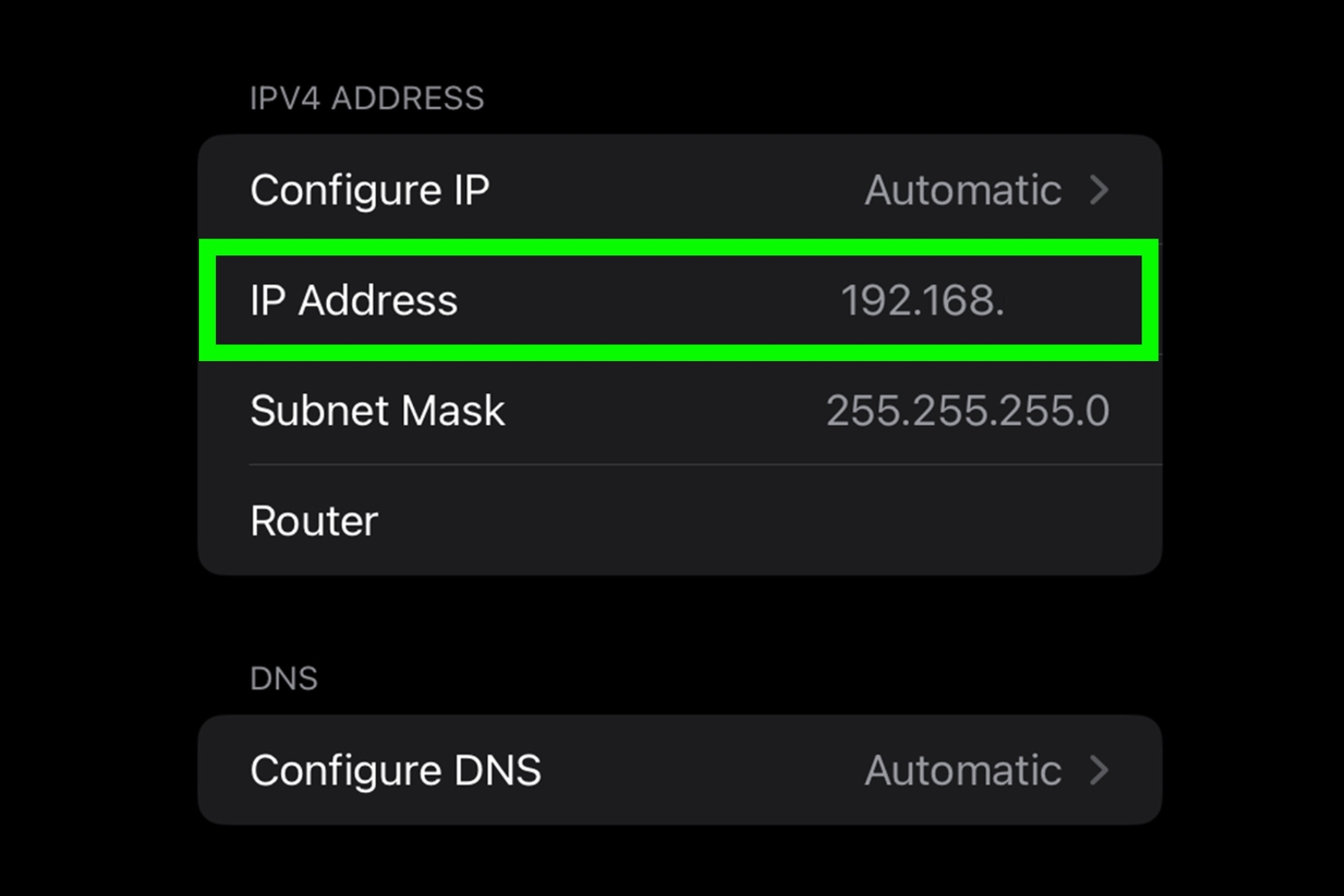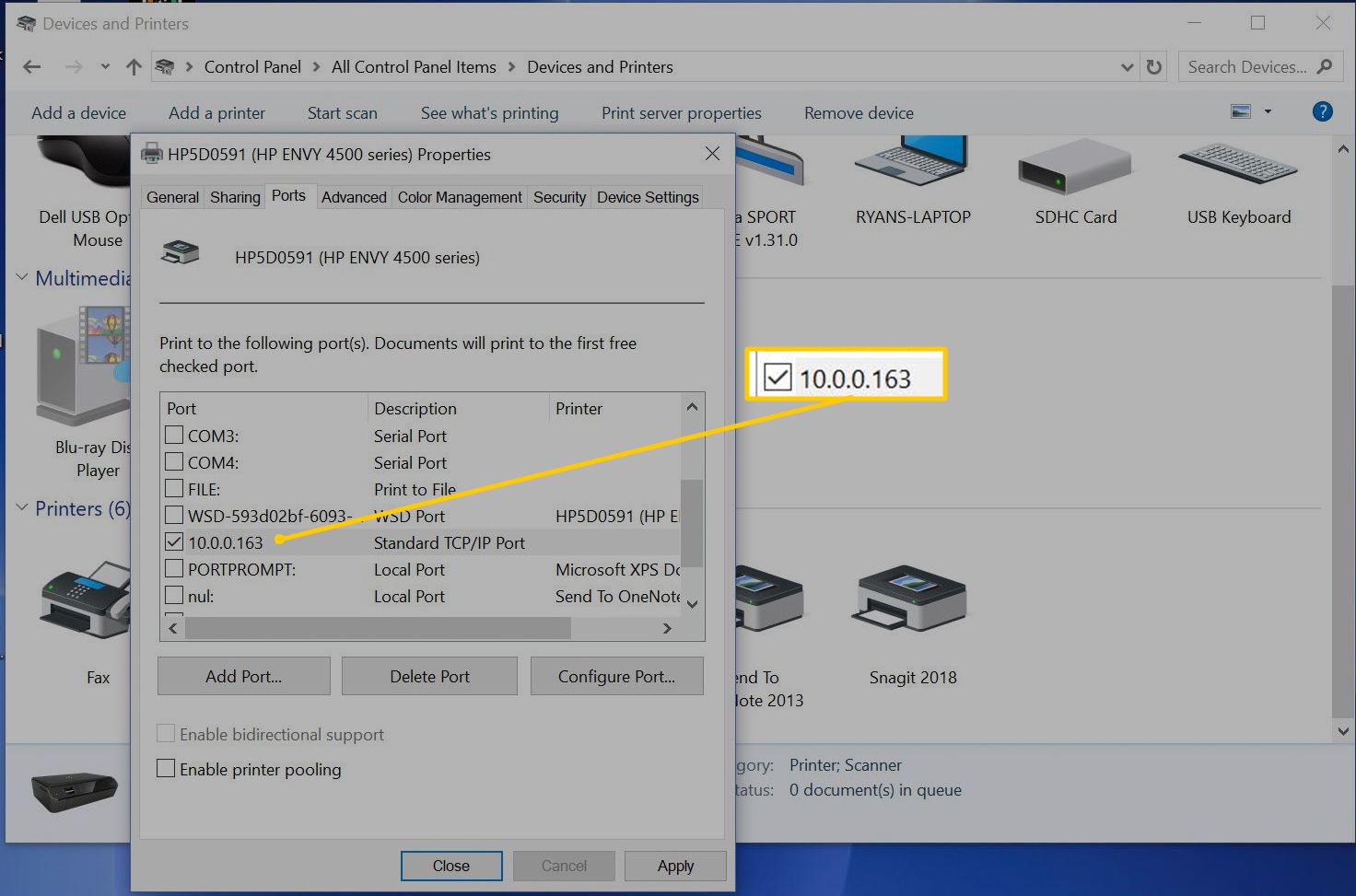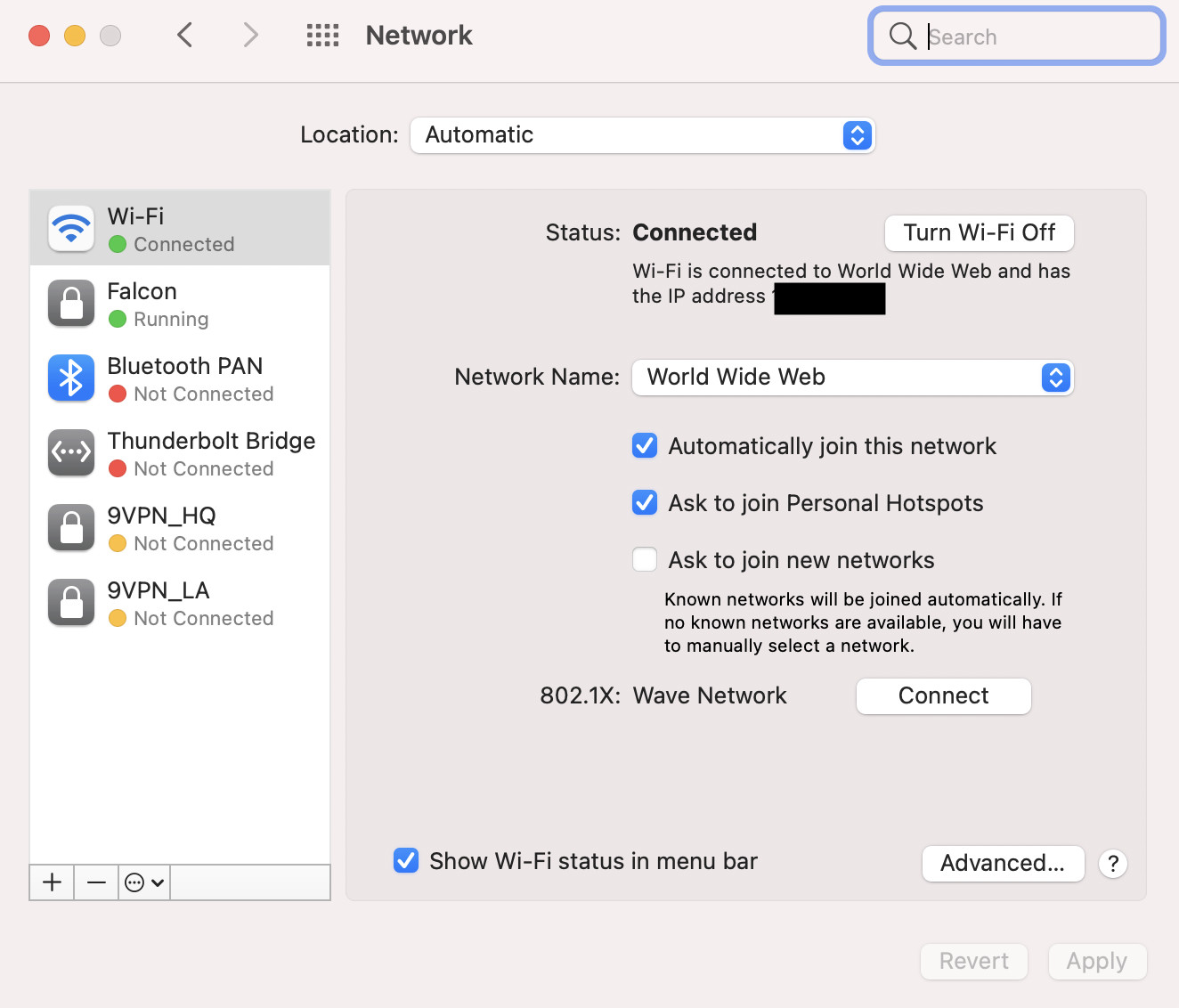What is an IP address?
An IP address, short for Internet Protocol address, is a unique numerical identifier assigned to every device connected to a computer network. It serves as a digital address that helps identify and locate devices on the internet. Think of it as your device’s virtual ID card, allowing it to communicate and interact with other devices over the internet.
An IP address consists of a series of numbers separated by periods. It is composed of two parts: the network address and the host address. The network address identifies the network to which the device is connected, while the host address distinguishes the specific device within that network.
IP addresses can be either IPv4 or IPv6. IPv4 uses a 32-bit address scheme, represented by four groups of numbers ranging from 0 to 255 (e.g., 192.168.0.1). With the increasing number of devices connecting to the internet, IPv6 was introduced to accommodate the growing demand for addresses. IPv6 uses a 128-bit address scheme, allowing for a significantly larger number of unique IP addresses (e.g., 2001:0db8:85a3:0000:0000:8a2e:0370:7334).
Internet Service Providers (ISPs) assign IP addresses to devices when they connect to the internet. These addresses can be dynamic, meaning they change each time you connect, or static, where the same address remains assigned to your device.
Understanding your IP address is crucial for various reasons, including troubleshooting network issues, setting up network devices, accessing shared resources, and even protecting your online privacy. By knowing your IP address, you can better manage your network connections and ensure a smooth browsing experience.
Why do you need to know your IP address?
Knowing your IP address can be beneficial for several reasons, both practical and security-related. Here are some key reasons why you might need to know your IP address:
1. Troubleshooting network issues: When experiencing network connectivity problems, knowledge of your IP address can help IT support or technicians diagnose and solve the issue more efficiently. It provides essential information about your network configuration and allows them to identify potential conflicts or misconfigurations.
2. Setting up network devices: When setting up devices such as routers, printers, or network-attached storage (NAS), knowing your IP address is crucial. It enables you to access the device’s configuration interface and make the necessary adjustments to establish connectivity and customize settings.
3. Accessing shared resources: In a network environment, you may need your IP address to access shared resources, such as shared folders or printers. By knowing your IP address, you can connect to these resources from other devices on the same network and efficiently share files or utilize networked devices.
4. Remote access to your computer: If you need to access your computer remotely, having your IP address allows you to connect to it from another location. This feature is particularly useful when working from home or traveling, as it enables secure access to your files, applications, and other resources.
5. Protecting your online privacy: Understanding your IP address can also help you protect your online privacy. By knowing your IP address, you can identify whether you are using a VPN (Virtual Private Network) or proxy server to mask your real IP address. This can help prevent online tracking and protect your sensitive information from potential threats.
6. Monitoring network activity: Your IP address is vital for monitoring network activity. Network administrators often analyze IP addresses to track bandwidth usage, identify potential security breaches, and ensure efficient network performance.
7. Security purposes: Knowing your IP address can assist in detecting and preventing unauthorized access to your network or devices. By regularly checking your IP address, you can identify any suspicious connections or activities and take appropriate actions to ensure the security of your network.
Overall, knowing your IP address provides valuable information for network troubleshooting, device configuration, accessing shared resources, remote access, online privacy protection, network monitoring, and security purposes. By familiarizing yourself with your IP address, you can optimize your network performance and ensure a secure online experience.
Methods to find out your IP address
There are several methods you can use to find out your IP address. Whether you’re using a computer or a mobile device, here are some common ways to determine your IP address:
1. Using a search engine: One of the easiest and quickest ways to find your IP address is by using a search engine. Simply type “What is my IP address” in the search bar, and the search results will display your public IP address.
2. Using the command prompt (Windows): If you’re using a Windows computer, you can also find your IP address using the command prompt. Open the command prompt by pressing the Windows key + R, type “cmd,” and press Enter. In the command prompt, type “ipconfig” and press Enter. Look for the “IPv4 Address” under your network adapter to find your IP address.
3. Using the Terminal (Mac): For Mac users, you can find your IP address using the Terminal. Open the Terminal by navigating to Applications > Utilities > Terminal. In the Terminal window, type “ifconfig” and press Enter. Look for the “inet” field next to your network adapter to find your IP address.
4. Using the Settings app (iOS): If you’re using an iPhone or iPad, you can find your IP address through the Settings app. Open the Settings app and tap on “Wi-Fi.” Find the network you’re connected to and tap on the “i” icon next to it. Your IP address will be displayed next to “IP Address.”
5. Using the Network Preferences (Mac): Mac users can also find their IP address through the Network Preferences. Go to the Apple menu > System Preferences > Network. Select your network connection (Wi-Fi or Ethernet) and click on “Advanced.” Go to the “TCP/IP” tab, and you will find your IP address next to “IPv4 Address.
6. Using the Control Panel (Windows): Another method for Windows users is to find their IP address through the Control Panel. Open the Control Panel and go to “Network and Internet” > “Network and Sharing Center.” Click on the active network connection, then click on “Details.” Your IP address will be listed next to “IPv4 Address.”
7. Using a website or online tool: Many websites and online tools are available that can display your IP address. Simply visit any of these websites or tools and they will automatically detect and show your IP address.
These methods can help you easily find your IP address regardless of the device you’re using. Whether you’re troubleshooting network issues, setting up devices, or ensuring online security, knowing your IP address is essential.
Using a search engine
One of the simplest and quickest methods to find out your IP address is by using a search engine. Here’s how you can do it:
1. Open your preferred web browser and go to the search engine of your choice (e.g., Google, Bing, Yahoo).
2. In the search bar, type “What is my IP address” and hit Enter. The search engine will display the results, and at the top of the page, you will see your public IP address.
3. Your IP address will typically be shown in a format like “123.456.789.123”. This is your unique identifier on the internet, allowing devices to communicate with each other.
4. You can also find additional information about your IP address, such as your approximate location and internet service provider (ISP).
Using a search engine to find your IP address is a straightforward method that works on any device with an internet connection. It’s especially useful when you need to quickly find your IP address without any complicated steps.
Remember that the IP address displayed by the search engine is your public IP address, which is the address your ISP assigns to your network. If you want to find the IP address of a specific device on your local network, such as your computer or smartphone, you will need to use other methods like checking network settings or using command line tools.
Using the command prompt (Windows)
If you’re using a Windows computer, you can find out your IP address using the command prompt. This method requires a few simple steps:
1. Press the Windows key + R on your keyboard to open the Run dialog box.
2. In the Run dialog box, type “cmd” and press Enter. This will open the command prompt.
3. In the command prompt window, type “ipconfig” and press Enter. This command displays the IP configuration information for all network adapters on your computer.
4. Look for the network adapter that you are currently using. It could be labeled as “Ethernet adapter” for a wired connection or “Wireless LAN adapter” for a Wi-Fi connection.
5. Under the network adapter section, you will find various details including the IP address. Look for the line that says “IPv4 Address” followed by a series of numbers separated by periods (e.g., 192.168.0.1). This is your IP address.
6. If you have multiple network adapters, make sure to identify the IP address associated with the right adapter that you are using.
Using the command prompt is a reliable way to find out your IP address, especially if you prefer using the Windows command line interface. It provides detailed network information and allows you to quickly identify the IPv4 address associated with your network connection.
Knowing your IP address through the command prompt is particularly useful when troubleshooting network issues, setting up network devices, or establishing network connections. It provides you with valuable information that can help you resolve network-related problems efficiently.
Using the Terminal (Mac)
If you are using a Mac, you can utilize the Terminal to find out your IP address. Here’s how:
1. Go to your Applications folder and open the “Utilities” folder. From there, launch the Terminal app.
2. Once the Terminal window opens, type “ifconfig” and press Enter. This command displays the network configuration details for all network interfaces on your Mac.
3. Look for the network interface you are currently using, which can be “en0” for Ethernet or “en1” for Wi-Fi. The interface name may vary depending on your Mac model and network setup.
4. Under your network interface, look for the “inet” field, which displays your IP address. It will be listed next to a series of numbers separated by periods (e.g., 192.168.0.1). This is your IP address.
5. If you have both Ethernet and Wi-Fi connections, make sure to identify the IP address associated with the network interface you are currently using.
Using the Terminal on a Mac provides you with a straightforward way to find your IP address. It allows you to quickly access your network configuration details and retrieve the necessary information without the need for third-party applications.
Knowing your IP address through the Terminal is especially useful in various scenarios, such as troubleshooting network issues, configuring network devices, or establishing connections with other devices on your network. Additionally, it provides you with vital information that can help you manage network-related tasks more efficiently.
Using the Settings app (iOS)
If you’re using an iPhone or iPad, you can find out your IP address through the Settings app. Here’s how you can do it:
1. Open the Settings app on your iOS device. You can usually find it on your home screen.
2. Scroll down and tap on “Wi-Fi”. This opens the Wi-Fi settings page.
3. On the Wi-Fi settings page, you’ll see a list of available Wi-Fi networks. Find the network you’re connected to and tap on the blue “i” icon next to it.
4. On the network details page, you’ll find various information about the Wi-Fi network you’re connected to. Scroll down until you see the “IP Address” field. The IP address displayed is your device’s current IP address.
5. Make a note of the IP address displayed, or take a screenshot for future reference if needed.
Using the Settings app on iOS devices provides you with a simple and convenient way to find out your IP address. It eliminates the need for additional apps or complex steps, allowing you to retrieve the necessary information directly from your device settings.
Finding your IP address through the Settings app is particularly useful when troubleshooting network issues, configuring network settings, or accessing resources on your local network. It provides you with the necessary information to establish connections and ensure smooth network operations on your iPhone or iPad.
Using the Network Preferences (Mac)
Mac users can easily find out their IP address through the Network Preferences. Here’s how:
1. Click on the Apple menu in the top left corner of your screen and select “System Preferences”.
2. In the System Preferences menu, click on “Network”. This will open the Network Preferences window.
3. On the left side of the Network Preferences window, you’ll see a list of available network connections (Ethernet, Wi-Fi, etc.). Select the connection that you are currently using to access the internet.
4. Once you’ve selected the appropriate connection, you’ll see various information about that network connection on the right side of the window. Click on the “Advanced” button.
5. In the Advanced settings, select the “TCP/IP” tab. Here, you’ll find your IP address listed next to “IPv4 Address”. The IP address will be a series of numbers separated by periods (e.g., 192.168.0.1).
6. Take note of your IP address or take a screenshot for future reference if needed.
Using the Network Preferences on a Mac offers a simple and straight-forward way to find your IP address. It provides you with access to detailed network settings and essential information about your network connection.
Finding your IP address through the Network Preferences is particularly helpful for troubleshooting network issues, configuring network settings, or accessing network resources. It allows you to quickly retrieve the necessary information and manage your Mac’s network connections more effectively.
Using the Control Panel (Windows)
If you’re using a Windows computer, you can find your IP address through the Control Panel. Here’s how:
1. Click on the Start menu and search for “Control Panel”. Open the Control Panel from the search results.
2. In the Control Panel window, navigate to the “Network and Internet” category. Click on “Network and Sharing Center”.
3. On the Network and Sharing Center page, click on the active network connection. This could be labeled as “Connections” or display the name of your network.
4. In the new window that opens, click on the “Details” button. This will display the network connection details, including your IP address.
5. Look for the “IPv4 Address” field in the Network Connection Details window. The IP address displayed next to IPv4 Address is your computer’s IP address. It will be a series of numbers separated by periods (e.g., 192.168.0.1).
6. Make note of your IP address or take a screenshot for future reference if needed.
Using the Control Panel on Windows provides a convenient way to access various network settings, including your IP address. It allows you to easily view the detailed information about your network connection without needing third-party applications.
Discovering your IP address through the Control Panel is particularly helpful when troubleshooting network issues, managing network settings, or accessing resources on your local network. It provides essential information to help you establish and maintain network connections effectively on your Windows computer.
Using a website or online tool
If you prefer a simple and quick method to find out your IP address without any technical steps, you can use a website or an online tool. Here’s how:
1. Open your web browser and search for “What is my IP address” or similar keywords.
2. You will find various websites or online tools that provide information about your IP address. Click on any reliable and trustworthy website or tool from the search results.
3. Once you access the website or tool, it will automatically detect and display your IP address.
4. The website or tool may also provide additional details such as your location, ISP, and even the type of connection you are using.
5. Take note of your IP address or use the provided options to copy or save the information if needed.
Using a website or online tool offers a convenient and accessible way to find out your IP address. It eliminates the need for technical knowledge or manual configuration, making it suitable for users of all skill levels.
This method is especially useful when you quickly need to know your IP address on any device with internet access. It’s also handy when you’re unable to use other methods like accessing device settings or using command line tools.
However, it’s important to choose a reliable and reputable website or online tool to ensure the security and accuracy of the information provided. Be cautious of suspicious websites that may collect your information or engage in malicious activities.
Tips on finding your IP address
Here are some helpful tips to keep in mind when trying to find your IP address:
1. Use multiple methods: If you’re unable to find your IP address using one method, try another. Different devices and network configurations may require using different methods to access the information.
2. Check the right network adapter: Make sure you’re checking the IP address of the correct network adapter when using command-line tools or network settings. Some devices have multiple network interfaces, so be sure to identify the one you’re currently using.
3. Use reliable sources: When using websites or online tools to find your IP address, opt for well-known, reputable sources. Be cautious of suspicious websites that might collect your information or provide inaccurate results.
4. Consider dynamic and static IP addresses: Remember that your IP address can be either dynamic or static. If you have a dynamic IP address, it can change each time you connect to the internet. If you have a static IP address, it remains the same. Take note of this distinction when troubleshooting or configuring network settings.
5. Refresh or reconnect: If you’re experiencing issues with your network connection, try refreshing or reconnecting to the network. This can sometimes result in a new IP address being assigned to your device.
6. Consult your network administrator: If you’re in a business or enterprise environment, and you’re unable to find your IP address, consult your network administrator or IT support team. They can provide you with guidance and assistance specific to your network setup.
7. Protect your privacy: Be cautious about sharing your IP address with unknown or untrusted sources. Your IP address can provide information about your approximate location and internet service provider. Protect your privacy by only sharing your IP address with trusted individuals or organizations.
By following these tips, you can effectively find your IP address and utilize this information for various purposes, such as troubleshooting network issues, configuring network devices, or protecting your online privacy.
Conclusion
Knowing your IP address is essential for various reasons. Whether you’re troubleshooting network issues, setting up network devices, or accessing shared resources, understanding your IP address allows you to effectively manage and optimize your network connections.
There are multiple methods to find out your IP address, depending on the device you’re using and your preferred approach. Using a search engine, command prompt (Windows), Terminal (Mac), Settings app (iOS), Network Preferences (Mac), Control Panel (Windows), or online tools are all viable options to discover your IP address.
When finding your IP address, it’s important to consider using multiple methods if one doesn’t work, checking the right network adapter, and using reliable sources. Additionally, being aware of dynamic and static IP addresses, refreshing or reconnecting to the network, and consulting with network administrators can further assist in obtaining accurate IP information.
Always prioritize your privacy when sharing your IP address and be cautious of untrusted sources. Protecting your online security is crucial in today’s digital landscape.
In conclusion, understanding your IP address empowers you to manage your network connections effectively, troubleshoot network issues, and maximize the functionality of your devices and resources. Stay informed about your IP address and leverage this knowledge to navigate the digital world with confidence.







